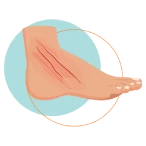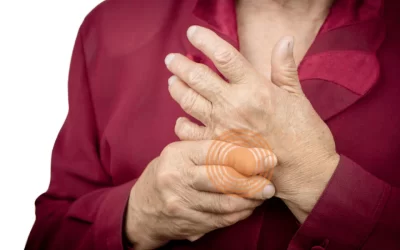Programs
Wound Healing Program
Wound Treatment
offering a positive and hopeful alternative for those seeking diabetic foot ulcer treatment and other wound treatments
Holistic Approach


Oxygen Therapy


Counselling



Management
Conditions We Heal
FAQ’s
What is hyperbaric oxygen therapy (HBOT) and how does it help in diabetic foot ulcer treatment?
HBOT is a medical treatment that involves breathing pure oxygen in a pressurized room or chamber. This increases the amount of oxygen in the blood, which helps the body to heal wounds, including diabetic foot ulcers, more effectively.
How does HBOT therapy work for treating pressure ulcers?
Is HBOT therapy effective for diabetic foot treatment?
Are there any risks or side effects associated with HBOT therapy for wound treatment?
While HBOT is generally safe, some potential risks and side effects may include ear pain or discomfort, and temporary nearsightedness. It’s important to discuss any potential risks with a healthcare professional before undergoing HBOT therapy.
How many HBOT sessions are typically needed for wound treatment?
The number of HBOT sessions needed for wound treatment can vary depending on the individual and the severity of the wound. In general, a course of HBOT treatment for wound healing may involve multiple sessions, typically ranging from 20 to 40 sessions. A healthcare professional can provide a personalized treatment plan based on the specific needs of the patient.
Accreditations and Certifications


Hyperbaric Oxygen Therapies: The Best Wound Treatment
Hyperbaric oxygen therapy (HBOT) is a promising treatment for diabetic foot ulcers. This therapy involves breathing pure oxygen in a pressurized room, which allows the lungs to take in more oxygen than normal. The increased oxygen levels in the blood help promote healing and fight infection in the wound.
For diabetic patients, foot ulcers are a common and serious complication. These ulcers can be slow to heal and may lead to serious complications, including the risk of amputation. HBOT is effective in treating non-healing diabetic foot ulcers by improving blood flow and stimulating the growth of new blood vessels, which are essential for wound healing.
HBOT can also help reduce swelling and inflammation, fight infection, and promote the formation of new skin tissue. This therapy has the potential to significantly reduce the need for amputation and improve the overall quality of life for diabetic patients with foot ulcers. It is a non-invasive and safe treatment option that offers hope for those struggling with non-healing wounds.
Other Programs
Research Evidences -1
Effect of hyperbaric oxygen therapy on the patients with venous leg ulcer: A systematic review and meta-analysis
Authors: Ziye Bai, Huaigu Wang, Haobo Sun, Lei Cui
The study evaluates the effectiveness of hyperbaric oxygen therapy (HBOT) in treating venous leg ulcers (VLUs). By analyzing data from multiple studies, it assesses outcomes such as ulcer healing rates, reduction in ulcer size, and pain relief. HBOT enhances oxygen delivery, promotes tissue repair, and reduces inflammation, all crucial for healing VLUs. The study provides evidence on HBOT as a potential adjunct therapy for managing chronic VLUs, which are often difficult to treat and impact patients’ quality of life.
You may be interested in these questions
What is the primary objective of the study?
The primary objective of the study is to evaluate the effectiveness of hyperbaric oxygen therapy (HBOT) in improving healing outcomes for patients with venous leg ulcers (VLUs) compared to standard treatments or control groups.
How does hyperbaric oxygen therapy (HBOT) work in healing venous leg ulcers?
HBOT involves delivering 100% oxygen at increased atmospheric pressure, which enhances oxygen delivery to damaged tissues, stimulates angiogenesis (formation of new blood vessels), reduces inflammation, and promotes tissue repair—key processes for healing VLUs.
What were the main outcomes measured in the study?
The main outcomes include:
- Ulcer healing rates (percentage of ulcers healed)
- Reduction in ulcer size
- Time taken for ulcers to heal
- Pain relief
- Improvement in patients’ quality of life
What are the clinical implications of this study?
The findings suggest that HBOT can be a valuable adjunct therapy for patients with chronic VLUs, particularly for those who do not respond well to standard treatments. This evidence can guide clinicians in optimizing treatment strategies.
Who might benefit the most from HBOT for venous leg ulcers?
Patients with chronic, non-healing venous leg ulcers, especially those with poor tissue oxygenation or complications from delayed healing, may benefit the most from HBOT.
Research Evidences - 2
Efficacy of hyperbaric oxygen therapy for diabetic foot ulcers: An updated systematic review and meta-analysis
Authors: Zhiming Zhang, Wenjing Zhang, Yuqi Xu, Dewu Liu
The studyassesses the effectiveness of hyperbaric oxygen therapy (HBOT) in treating diabetic foot ulcers (DFUs). It reviews recent studies to measure outcomes like ulcer healing rates, wound size reduction, time to healing, and amputation prevention. HBOT enhances oxygenation in hypoxic tissues, promotes angiogenesis, reduces inflammation, and accelerates tissue repair. The findings highlight that HBOT significantly improves healing and reduces the risk of amputations when combined with standard diabetic wound care.
You may be interested in these questions
What is the purpose of the study?
The study aims to evaluate the effectiveness of hyperbaric oxygen therapy (HBOT) in improving healing outcomes for diabetic foot ulcers (DFUs) through a systematic review and meta-analysis of recent studies.
How does hyperbaric oxygen therapy (HBOT) help in treating diabetic foot ulcers?
HBOT delivers 100% oxygen at high atmospheric pressure, which enhances oxygen supply to hypoxic tissues, promotes angiogenesis (new blood vessel formation), reduces inflammation, and accelerates tissue repair, all of which are essential for healing DFUs.
What are the key findings of the study?
The study demonstrates that HBOT significantly improves ulcer healing rates, reduces wound size, shortens healing time, and lowers the risk of major amputations when combined with standard diabetic wound care.
Why is this study important for clinical practice?
The study highlights HBOT as an effective supplementary therapy for diabetic foot ulcers, offering better healing outcomes and reducing the likelihood of amputations, which are common and severe complications of diabetes.
Blog
Latest News & Resources
Physical Therapy for Ageing Knees: A Path to Relieving Knee Pain Naturally
As we age, our knees often bear the brunt of wear and tear, leading to discomfort and limited mobility. Knee pain can be a significant challenge,...
Arthritis Wellness Program – Non-surgical Osteoarthritis Treatment at Maana Health
Osteoarthritis is a common condition affecting lakhs of people worldwide. It causes pain, stiffness, and inflammation in the joints, which can...
Office
Monday – Saturday : 8:30 am to 6:00 pm









